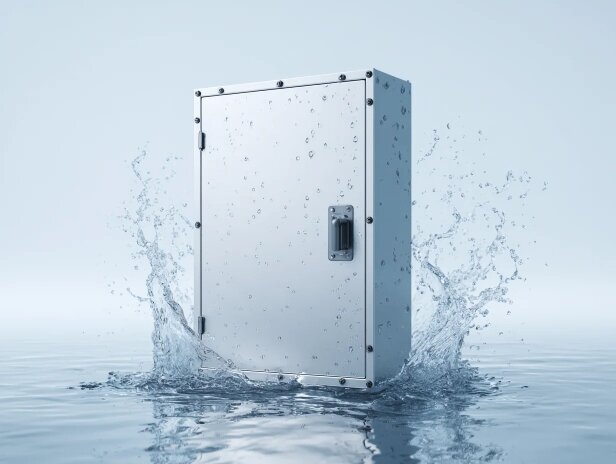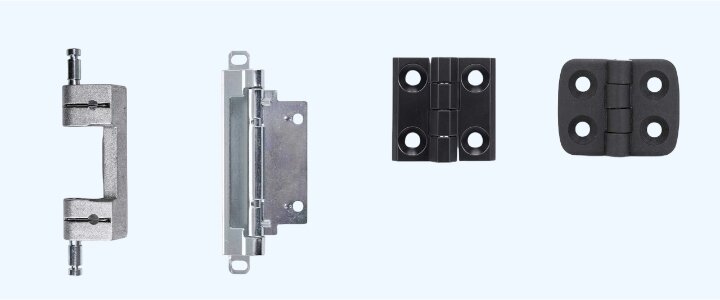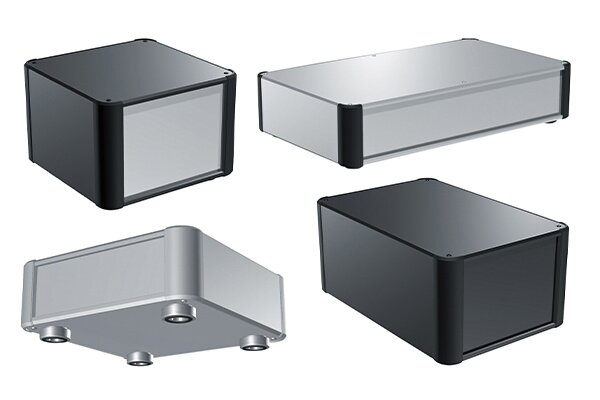Water and debris can damage outdoor and industrial equipment. Even a small leak can harm electronics, reduce service life, and cause failures in real use. This is why sealed enclosure design plays a major role in product reliability.
Many designers aim for an IP or NEMA rating. For example, an IP67 enclosure must block all dust and stay sealed for 30 minutes under 1 meter of water. This guide breaks down the key ideas that help you build enclosures that remain sealed in real operating conditions.

Setting the Protection Requirements
Indoor spaces often look safe, but they still create problems for enclosures. Dust can slip through tiny gaps. Warm equipment can cause moisture to form inside the housing. Light vibration from nearby machines can slowly loosen screws and fittings.
Outdoor use adds stronger stress. Rain can strike the enclosure from many directions. Wind can push water into seams that look tight. Sunlight heats the metal during the day. Cooler air shrinks it at night. This expansion and contraction lowers gasket pressure and creates small openings. Water can enter even when there is no direct rainfall.
Coastal and industrial areas bring extra risks. Salt spray leaves crystals that speed up corrosion. Factories expose enclosures to oil, fuel, and chemical mist. Plastics can weaken under strong UV. Metals can lose strength in acidic air. Vibration, impact, and rough handling can shift hinges and loosen hardware. These changes break the sealing line and raise the chance of leaks.
Selecting the Target Rating (IP or NEMA)
You can avoid many issues by choosing a rating that matches real conditions. A rating that looks acceptable on a chart may fail in the field if it does not address the actual hazards around the product.
IP ratings show two things: how well the enclosure blocks dust, and how well it blocks water.
- IP54 stops dust and light splashes.
- IP65 blocks dust and most rain or washdowns.
- IP66 handles strong water jets.
- IP67 survives short-term submersion.
- IP68 handles deeper or longer submersion, depending on the test limits.
NEMA ratings go further. They cover dust and water, and they also consider corrosion.
- NEMA 3R is suitable for outdoor rain exposure.
- NEMA 4 protects against water from hoses.
- NEMA 4X adds corrosion resistance for marine or chemical areas.
- NEMA 6 and 6P allow short-term submersion.
Material Selection for Water- and Debris-Resistant Enclosures
Material choice affects how an enclosure handles water, dust, heat, and long-term use. A clear comparison helps you choose a stable option before you design seals or joints.
Metal Options
Metal provides strong protection in harsh conditions. It handles impact and vibration well and keeps surfaces flat for good sealing.
- Stainless steel offers the highest corrosion resistance. It works well in coastal areas, outdoor power systems, and food-grade equipment. It stays stable in heat and cold. It also keeps flange surfaces flat after welding. The main downsides are weight and higher cost.
- Aluminum gives you a lighter choice. It resists corrosion better than plain steel and accepts coatings very well. It suits pole-mounted boxes, machine covers, and telecom housings. Its strength is lower than steel’s, so large panels may need extra support.
- Galvanized steel provides balanced performance. The zinc layer slows rust and works well for moderate outdoor use. It costs less than stainless steel. It does not last long in salt spray or chemical environments because the zinc layer wears away over time.
Non-Metal Options
Non-metal materials help when weight, cost, or shape complexity is a key factor. Plastics allow complex forms with fewer seams, which lowers the number of leak paths.
- ABS is simple to mold and low in cost. It fits indoor use. It becomes brittle outdoors because UV breaks it down.
- Polycarbonate (PC) works well outside. It handles impact and maintains strength under heat. It is a good fit for lighting housings, sensors, and instrument covers.
- Nylon (PA) resists chemicals and abrasion. It absorbs moisture, which can change its size and reduce fit accuracy unless controlled.
- Composites offer high stiffness and strong corrosion resistance. They work well for outdoor communication boxes and marine housings.
Surface Treatments & Coatings
Coatings protect enclosure materials from water, dust, UV, and chemicals. They increase service life and keep sealing surfaces stable.
- Malowanie proszkowe forms a thick and even layer. It protects steel and aluminum from corrosion. It also lowers surface roughness, which helps the gasket seal better. Thick coating buildup can appear at edges, so sealing areas needs careful control.
- Anodowanie works very well on aluminum. It creates a hard surface that resists corrosion and UV. It prevents pitting in outdoor environments and gives a stable base for gasket bonding.
- Poszycie methods such as zinc, nickel, and chrome add extra protection to steel. Zinc helps against moisture. Nickel and chrome offer stronger resistance in industrial or chemical areas.
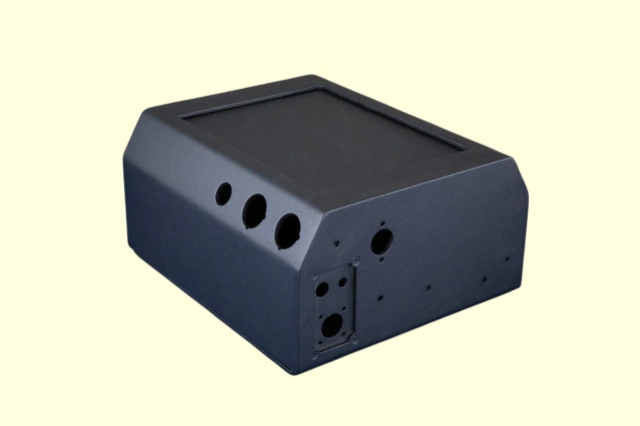
Structural Design Strategies to Prevent Ingress
Good structure helps block water and debris. The shape and layout of the enclosure guide how water moves and how gaps behave.
Minimizing Entry Paths
You can lower leak risk by reducing seams, joints, and small interfaces. Every added part creates a new gap. These gaps allow water to enter through capillary action or wind pressure.
Large, continuous surfaces keep debris and rain out. Simple panels give water fewer places to collect. Each bend or joint should have a clear purpose. This approach makes outdoor performance more stable.
Overlapping covers add protection without complex seals. One panel extends past the other and forms a natural shield. Water runs away from the joint instead of toward it.
Downward-facing openings work well outdoors. Vents, drains, and cable entries should point down so rain cannot fall straight inside. This simple layout prevents most splash failures.
Managing Water Flow Around the Enclosure
You can guide water movement across the surface. Good water flow reduces pooling and splash entry.
Sloped surfaces keep water moving. Even a slight angle helps water drain before it builds pressure or reaches small gaps. Flat surfaces often cause problems because water can sit for long periods.
Drainage paths move water away from seal areas. A small channel or groove helps keep surfaces dry. These paths also reduce hidden moisture from condensation.
Shielded openings block wind-driven rain. A small cover above a vent lowers the force of incoming water. This shield helps keep internal parts dry.
Ensuring Rigidity and Dimensional Stability
A rigid enclosure keeps sealing flanges flat. Flat flanges create even pressure on the gasket. Uneven areas cause low-pressure spots where water can enter.
Pochylenie się, spawanie, and machining can change the panel shape. Welding heat pulls metal inward. Sharp bends twist the sheet. Machining thin areas removes stiffness. These changes reduce sealing consistency.
You can control distortion by using proper bend radii. Larger radii lower stress and keep flanges flatter. You can add reinforcement ribs to large panels that might flex under load. These ribs help the enclosure stay stable during assembly and real-world use.
Seal Design: The Heart of Water and Debris Protection
A reliable seal sits at the center of any protected enclosure. The points below help you choose and design a seal that holds up under real-world stress.
Choosing the Right Sealing Method
Different sealing methods work better with various shapes, pressures, and environments. You should pick the method that fits the enclosure instead of trying to make one seal solve every problem.
- Gaskets work well on flat doors and large panels. They handle vibration well and are simple to replace. They do not require tight machining.
- O-rings create a tighter seal. They sit inside machined grooves. They are best for round or precise covers where the contact area is small but the pressure is high.
- Foam seals fit lightweight covers. They compress easily and do not need strong latches or screws. They cost less but can wear out faster in harsh outdoor conditions.
- Molded seals match complex shapes with no open joints. They cost more but provide strong protection for high IP ratings and frequent outdoor use.
Gasket & O-Ring Design Principles
Correct compression is the core of all good sealing. Too little compression creates gaps. Too much compression damages the seal. A stable range keeps performance steady over many years.
Flat sealing surfaces are critical. Rough or uneven surfaces create paths for leaks. Panels must stay flat after bending or welding. A clean flange lowers the risk of failure.
Groove design controls how an O-ring behaves. The groove must match the O-ring size and hold it in place during assembly. Too much space lets it roll. Too little space pinches it and shortens its life.
Fastener spacing affects compression. Fasteners must sit close enough to apply even pressure. Large gaps between screws create low-pressure zones where water can enter. A simple, even pattern helps prevent this.
You should choose the gasket material based on the surroundings.
- EPDM handles water and UV.
- Silicone stays flexible in heat and cold.
- Neoprene works well near oils.
- Viton resists strong chemicals.
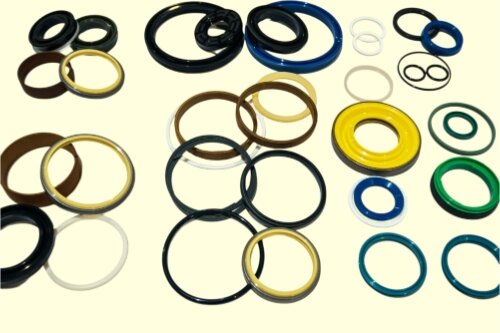
Typical Leakage Points and How to Fix Them
Most leaks start at moving parts or hardware locations. These areas need extra care.
Zawiasy
Hinges can shift when the door moves. This shift reduces compression near the hinge side. Raised lips or molded gaskets help maintain a continuous seal. Reinforced hinge plates keep the door aligned.
Elementy złączne
Screws create small paths for water along the threads. Sealing washers block these paths. Captive fasteners with built-in gaskets also help. Welded studs remove through-holes and eliminate leak paths.
Cable Entries
Cables move when pulled, which opens gaps. Cable glands compress around the cable and stop water from entering. Downward-facing entries prevent rain from traveling along the cable into the enclosure.
Access Doors
Large doors can bend under load. This bending breaks the compression on the gasket. You can add stiffeners, stronger latches, or dual-seal paths to keep the sealing line stable.
Manufacturing and Assembly Factors
Strong designs can still fail without good production practices. Welding, bending, and assembly all affect how well an enclosure stays sealed.
Quality of Welds and Bending
Welding changes the shape of metal. Heat pulls the panel inward as it cools. This movement bends the sealing flange and lowers gasket pressure. Even a small distortion creates low-pressure spots that let water pass. You can reduce this risk with controlled weld sequences and proper fixturing.
A continuous weld removes many leak paths, but it must remain clean. Dirt, rust, or oil can create pinholes or micro-cracks. These tiny openings let water enter under pressure. They also trap moisture and cause corrosion inside the joint.
Bending also affects sealing surfaces. Sharp bends put stress on the metal and warp nearby sections. Worn dies or inconsistent tooling create different bend angles across production batches. These changes tilt the sealing flange, and the gasket no longer sits flat.
Assembly Consistency
The assembly controls the final sealing pressure. Even the best gasket will fail if compression is not even.
Fastener torque must stay within a set range. Too little torque creates loose areas. Too much torque crushes the gasket and reduces its rebound. When the rebound drops, the gasket cannot seal well after temperature changes. Torque tools or preset drivers help keep pressure consistent.
Gasket installation must be repeatable. A stretched gasket loses its shape. A twisted gasket forms small channels. A gasket placed outside its groove leaves gaps at the corners. A quick visual check ensures the gasket sits flat and follows the channel evenly.
Compression should match across production runs. When each unit follows the same steps, the gasket compresses the same way every time. This gives predictable results during IP testing and real use.
Inspection and Leak Testing
Testing confirms whether the enclosure meets the target rating. Each method simulates a real condition that the product may face outdoors or in industrial spaces.
IP tests use dust chambers or water spray. Dust tests check whether fine particles pass through the seal. Water tests check how the enclosure handles rain, mist, and pressure. These tests show whether the seal stays stable under repeated stress.
Submersion tests place the enclosure underwater for a set depth and time. These tests matter for IP67 and IP68 designs. Even small bubbles show leak points. These failures help identify weak corners, low compression, or warped flanges.
Pressure spray tests simulate washdown conditions. High-pressure water hits the enclosure from many angles. This test shows whether fasteners, hinges, and access doors can resist strong spray. It helps confirm that sealing pressure stays even under load.
Wnioski
A strong enclosure starts with clear protection goals. Each design step builds on the last. The environment sets the demands. The material provides the base strength. The structure controls how water moves. The seal forms the barrier. The hardware maintains compression. The manufacturing steps keep the shape stable.
A high IP rating on paper does not guarantee long-term protection. Real performance depends on flat panels, stable gasket compression, secure hardware, and consistent assembly. When you design for long-term behavior, you reduce field failures, service calls, and downtime.
If you want help reviewing your enclosure design, you can share your drawings or requirements. You can get guidance on gasket choice, material selection, flange layout, weld control, and IP test planning. A short review can prevent many sealing issues before production begins.
Często zadawane pytania
What IP rating works for outdoor enclosures?
IP65 or IP66 works for rain, dust, and wind-driven spray. IP67 or IP68 is better when the enclosure may face standing water or short periods of submersion.
Which materials resist corrosion in coastal areas?
Stainless steel and treated aluminum perform well. UV-stable plastics and composites also work for lighter loads. Powder coating and anodizing improve long-term resistance.
How often should gaskets be replaced?
You can check gaskets during routine service. Replace them when they flatten, crack, or lose rebound. High heat or chemical stress may require more frequent replacement.
Can a sheet metal enclosure reach IP67?
Yes. You need flat sealing flanges, stable gasket compression, sealed fasteners or welded studs, and consistent assembly. All small gaps must be removed to pass submersion tests.
Hej, jestem Kevin Lee

Przez ostatnie 10 lat byłem zanurzony w różnych formach produkcji blach, dzieląc się tutaj fajnymi spostrzeżeniami z moich doświadczeń w różnych warsztatach.
Skontaktuj się z nami

Kevin Lee
Mam ponad dziesięcioletnie doświadczenie zawodowe w produkcji blach, specjalizując się w cięciu laserowym, gięciu, spawaniu i technikach obróbki powierzchni. Jako dyrektor techniczny w Shengen, jestem zaangażowany w rozwiązywanie złożonych wyzwań produkcyjnych i napędzanie innowacji i jakości w każdym projekcie.

